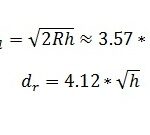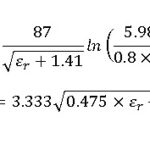What is the RACH in LTE?
Today, we are going to explore RACH, or Random Access Channel, a critical component in LTE (Long-Term Evolution) networks. To help you understand its importance, let me guide you through how RACH functions and why it’s vital for network communication.
In LTE, the Random Access Channel (RACH) is used by User Equipment (UE) to initiate communication with the network, especially when the UE is trying to connect to the cell after power-on, or when it needs to send an initial request to the network. It’s part of the initial access procedure that happens before any data transfer begins.
RACH plays a significant role in managing how UEs communicate with the network. The communication on the RACH is initiated by the UE when it doesn’t have an allocated communication resource. This can occur when the UE needs to access the network, respond to a paging request, or when it requires re-establishing its connection after being out of range.
Here’s a simplified explanation of how RACH works:
- UE Initiates Access: The UE (which is typically your mobile device) starts the process by attempting to access the network. The RACH is used to send an initial message to the eNodeB (evolved NodeB) when the UE does not yet have a dedicated resource.
- Random Access Procedure: When a UE sends a request to the eNodeB, it randomly selects a pre-defined message to transmit. This is called the “preamble.” The reason it’s called random access is that the UE doesn’t have a reserved slot to send data at this point, so it uses a random preamble to access the channel.
- eNodeB Response: Once the eNodeB receives the preamble, it responds with a message that provides the UE with the necessary resources (i.e., an uplink transmission slot) to complete the connection setup.
- Resource Grant: The UE uses the granted resource to send its initial message, such as a RRC connection request. At this point, the UE is assigned specific resources on the network, allowing for further communication and data transfer.
The main reason for using the RACH is to allow a UE to establish contact with the eNodeB in an efficient and timely manner, even when the device is new to the network or when the resources are not initially assigned. RACH also helps manage congestion by allowing the network to control the number of access requests from UEs and maintain its overall efficiency.
There are different types of RACH procedures depending on the situation. For example, in the case of a UE that has just powered on, it might use the “Initial Random Access” procedure. If the UE is responding to a paging request from the network, it might use the “Paging Response” procedure. These procedures ensure that the device and the network can synchronize and allow further communication.
RACH is particularly important for ensuring a seamless and efficient user experience in LTE. Without it, your mobile device wouldn’t be able to access the network properly, leading to delays and possible connection failures.
As we have discussed in earlier articles about the different procedures in LTE, RACH is part of the broader initial access mechanism. It ensures that UEs can establish a connection with minimal delay, laying the groundwork for smooth data transfer, call setup, and other services.


